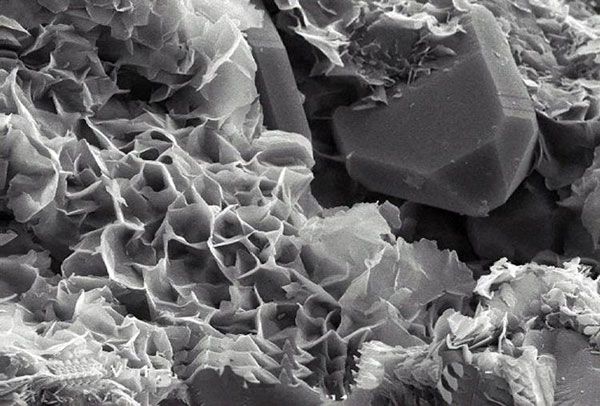Preparation technology of clay mineral-organic polymer composite bactericidal material

Among the new bactericidal materials based on clay minerals, clay minerals themselves are mainly used as carriers for loading bactericidal substances (such as metals, metal oxides, organic substances), and their bactericidal ability is still limited. A variety of methods are used to prepare modified clay minerals, and the composites made of clay minerals and other materials can be used as new bactericidal materials to produce bactericidal effects on a variety of bacteria.
Clay minerals can enhance the bactericidal ability through various modification methods (including thermal modification, acid modification, inorganic modification of metals or metal oxides, organic modification and composite modification, etc.). The surface area is increased, the mineral porosity and dispersibility are improved, and the overall thermal stability and mechanical strength of the material are improved. The clay minerals used for modification and preparation of bactericidal materials are mainly montmorillonite, kaolinite, halloysite, and vermiculite. is widely used for its adsorption capacity.
The preparation of clay minerals-organic polymer bactericidal materials usually refers to the addition of organically modified clay minerals to the organic polymer matrix to enhance the physicochemical properties and bactericidal activity of the materials. Such materials are mainly used to prepare nanofiber antibacterial cotton cloths, cotton pads and films. etc., clay minerals are used as fillers in composites to enhance the thermal and mechanical stability of nanomaterials, and clay minerals are usually at the nanoscale.
In view of the poor compatibility of clay minerals with organic molecules, organic compounds are often used to modify clay minerals to increase the dispersibility of clay minerals in organic solvents and ensure high compatibility between subsequent organic compounds and modified clay minerals. sex. Organic modification often uses anionic and cationic surfactants (quaternary ammonium salts and hybrid compounds are the most common), by changing the surface properties of the clay (changing the surface electrical properties and the surface hydrophobicity) or inserting organic matter into the interlayer (increasing the interlayer). domains and become hydrophobic between layers) to achieve modification. The organic polymer matrix used mainly includes polypropylene, polyethylene, polyethylene terephthalate, polyurethane, polystyrene, polyamide, polyolefin and the like. Biopolymers such as cellulose, starch, corn-derived plastics, polylactic acid, etc. have received attention due to their environmental friendliness and renewability.
Due to the high compatibility between organomodified clays and polymers, organomodified clays have become ideal materials for enhancing the properties of polymer matrices and are widely used as precursors for bactericidal materials. The properties of composite bactericidal materials are affected by the size scale of different components and the degree of mixing between multiple phases. During the preparation process, three types of intercalated composite materials, clay-exfoliated composite materials and flocculated composite materials are usually formed.
In intercalated nanocomposites, polymer chain moieties are regularly inserted between layers of clay. In exfoliated nanocomposites, the individual clay structural unit layers are relatively uniformly separated in the continuous polymer matrix, and the clay structural unit layers are completely exfoliated in the polymer matrix. The flocculated nanocomposite refers to the phenomenon of “flocculation” similar to the interaction of the hydroxylated edges between the clay mineral structural unit layers, the interlayer domain is reduced, and the polymer and the clay mineral phase are separated to a certain extent.
To study the bactericidal activity of Cu-loaded montmorillonite-chitosan nanocomposites. The synthesis of the composite is accomplished by ion exchange by placing montmorillonite in a medium containing copper sulfate. The lethality rate of the bactericidal material to Escherichia coli is as high as 99.98%, and all Staphylococcus aureus died after being treated with the material.
